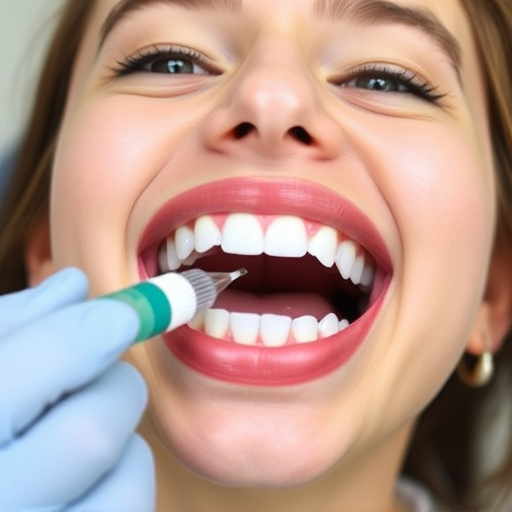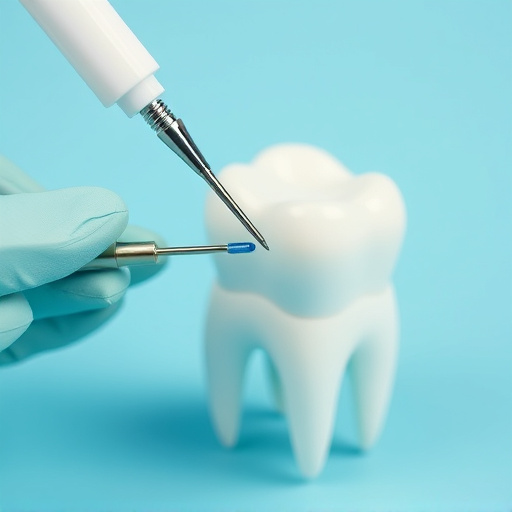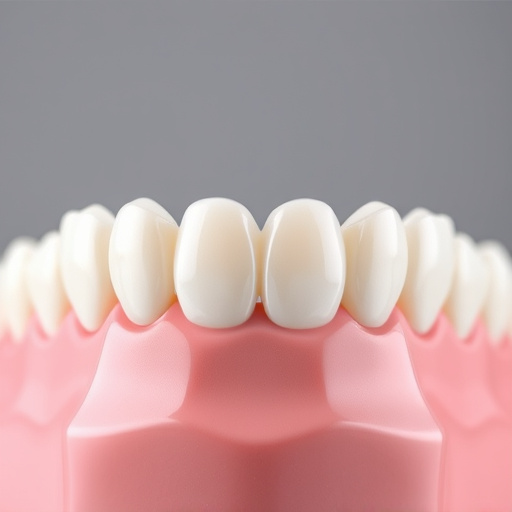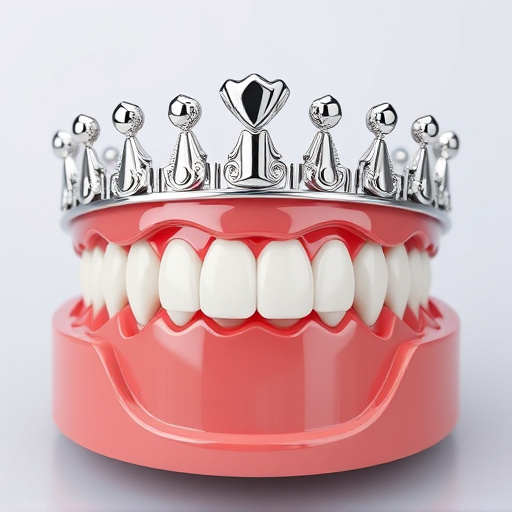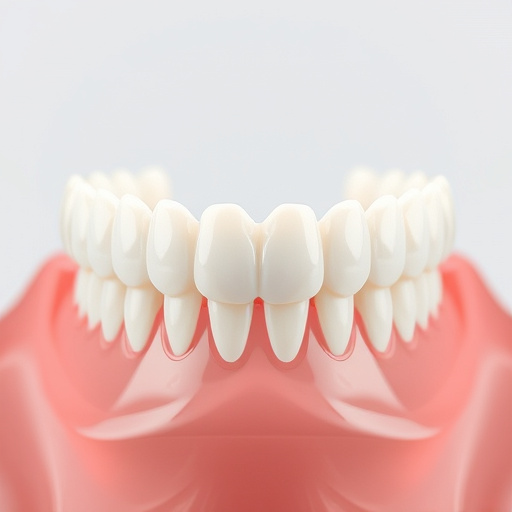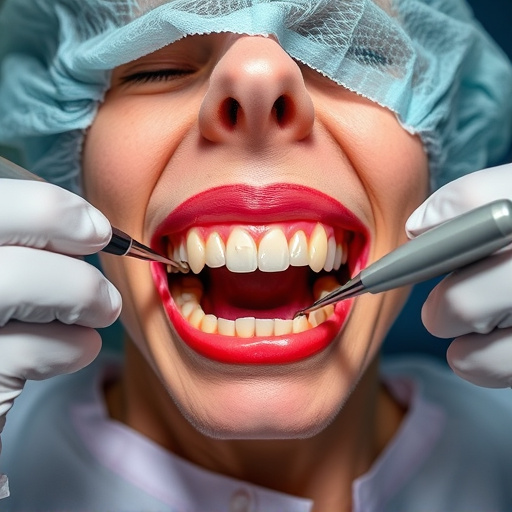Gum disease, a global oral health concern caused by bacterial buildup, progresses from gingivitis to periodontitis with tissue damage. Traditional treatments include scaling, antibiotics, and restorative dentistry. Laser therapy emerges as a revolutionary, minimally invasive gum disease treatment, using precise laser energy to clean pockets, reduce inflammation, and promote gum regrowth. Effective for mild to moderate cases, it offers quicker recovery times than surgery, but suitability depends on severity, oral health status, and individual needs. Best integrated into preventive dentistry for optimal long-term oral health management.
Laser therapy emerges as a modern, innovative approach to treating gum disease, offering precise and minimally invasive alternatives to conventional methods. This cutting-edge technique targets bacterial infections at the root of gum inflammation, promoting healing and tissue regeneration. Unlike traditional treatments, laser therapy reduces discomfort, minimizes bleeding, and shortens recovery times.
Explore the potential of this new frontier in oral care, understanding its benefits and considerations for effective gum disease treatment.
- Understanding Gum Disease: Causes and Conventional Treatments
- The Rise of Laser Therapy: A New Frontier in Oral Care
- Benefits and Considerations: Is Laser Therapy Right for You?
Understanding Gum Disease: Causes and Conventional Treatments
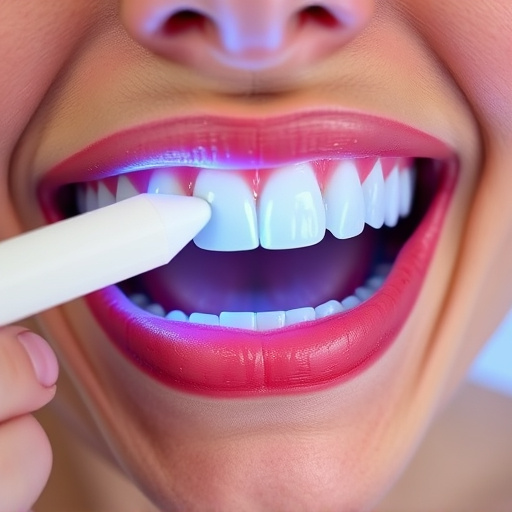
Gum disease is a prevalent oral health issue that affects millions worldwide. It’s essentially an infection caused by bacteria buildup along the gum line, leading to inflammation and potential tissue damage. The condition often starts with gingivitis, characterized by red, swollen gums and bleeding during brushing or flossing. If left untreated, it can progress to periodontitis, which involves deeper pocket formation between teeth and gums, bone loss, and in severe cases, tooth mobility and even loss.
Traditional gum disease treatment approaches include scaling and root planing procedures to remove plaque and tartar buildup, along with prescription antibiotics to manage bacterial infections. In some instances, dental crowns may be recommended to restore damaged teeth. Emergency dental care is crucial for acute cases involving severe pain or bleeding. Restorative dentistry techniques also play a significant role in treating gum disease by addressing structural issues and enhancing overall oral health.
The Rise of Laser Therapy: A New Frontier in Oral Care
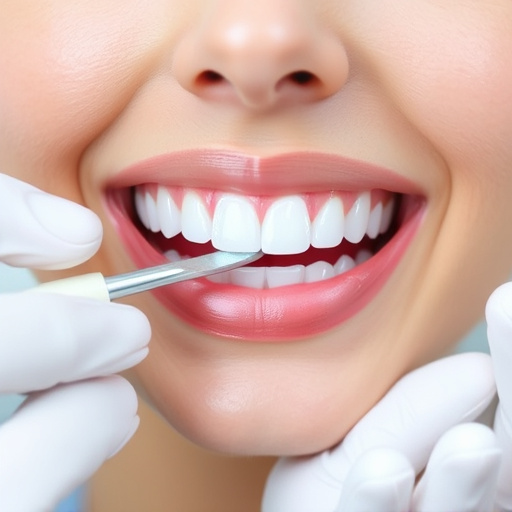
The field of dental care has witnessed a significant evolution with the advent of laser therapy, marking a new frontier in gum disease treatment. This innovative approach has captured the attention of both dental professionals and patients seeking advanced solutions for oral health issues. Laser therapy offers a minimally invasive yet highly effective method to combat gum disease, a condition that has traditionally been treated through surgical means. With its precision and ability to target specific areas, laser technology promises a more comfortable and efficient experience for patients.
The rise of laser therapy in preventive dentistry and cosmetic dentistry is driven by its potential to promote tooth repair without the drawbacks associated with conventional procedures. By utilizing focused light beams, lasers can gently clean pockets around teeth, reduce inflammation, and even stimulate regrowth of gum tissue. This non-invasive nature makes it an attractive alternative for individuals looking to avoid extensive surgical interventions while still achieving excellent results in gum disease treatment.
Benefits and Considerations: Is Laser Therapy Right for You?
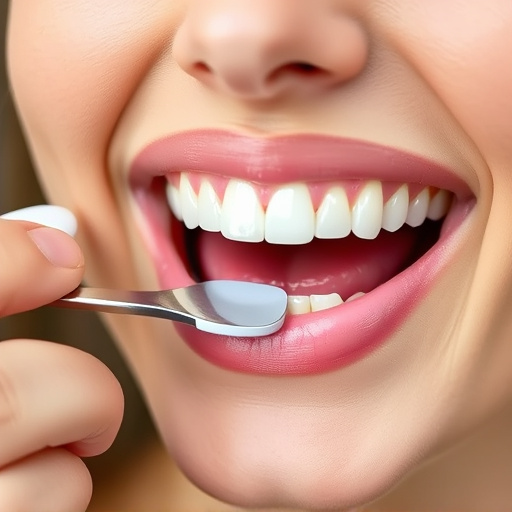
Laser therapy offers a modern approach to gum disease treatment, providing several significant benefits. It’s a minimally invasive procedure that utilizes targeted laser energy to destroy diseased gum tissue and bacteria, promoting healing and regenerating healthy bone structures. This advanced technique is particularly effective for mild to moderate periodontal diseases, offering faster recovery times compared to traditional surgery.
When considering laser therapy as a gum disease treatment, it’s essential to discuss your oral health history during routine oral exams with your dentist. While laser therapy is often a game-changer for many, it may not be suitable for everyone. Factors like the severity of gum disease, overall oral health, and specific dental needs will influence the decision. Laser procedures are typically recommended as part of a comprehensive preventive dentistry approach, complementing routine oral exams and tooth repair techniques to ensure long-lasting oral health.
Laser therapy represents a promising advancement in the field of gum disease treatment, offering precise and minimally invasive options alongside potential benefits such as reduced inflammation, faster healing times, and decreased discomfort compared to conventional methods. While it may not be suitable for every case, this modern approach shows great promise in transforming oral care, providing patients with another effective tool to maintain their dental health. As research continues, laser therapy could become an even more integral part of the gum disease treatment arsenal, helping to preserve smiles and overall well-being.
